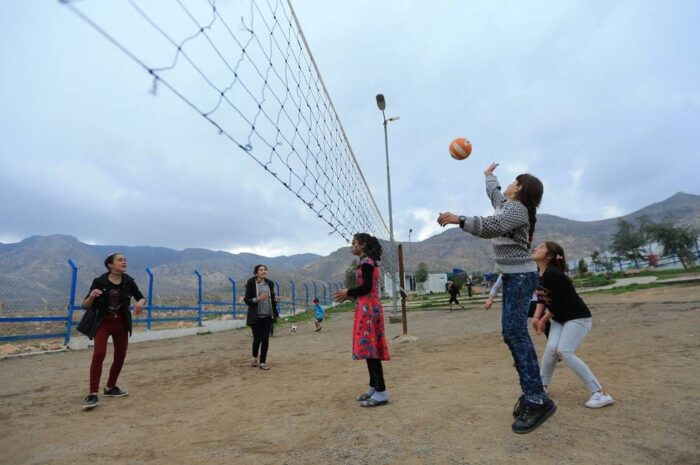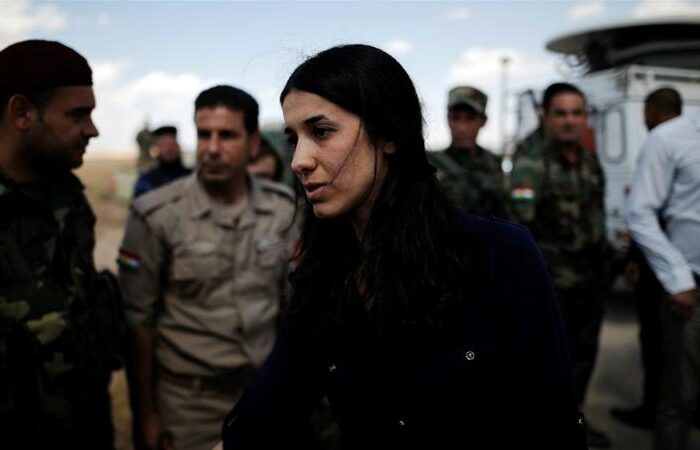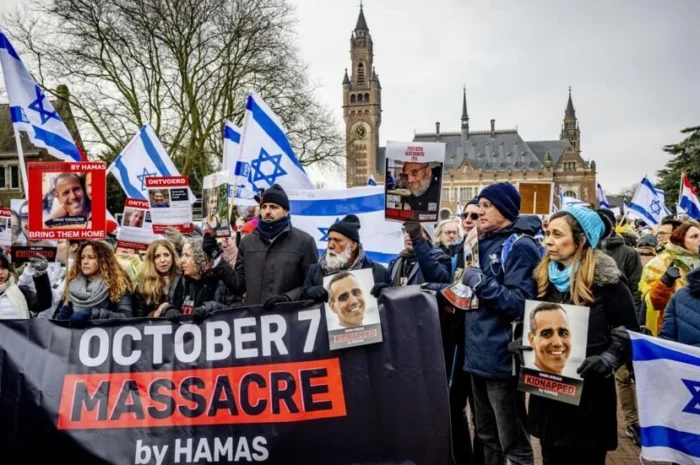
Note: The following article was originally published on Medium.
Israel’s recent war with Hamas and Palestinian Islamic Jihad (PIJ) has once again brought attention to the wider Israeli-Palestinian conflict. During the conflict there were commentators from across the globe offering their analyses, hot takes and opinions on the matter. One of these commentators was British comedian John Oliver who accused Israel of committing ‘war crimes’ in Gaza.
I INTRODUCTION
On May 16th’s airing of Last Week Tonight, John Oliver began the program by addressing the war raging between militants of the terrorist organisation Hamas, PIJ and the state of Israel. In this segment there is one moment of his commentary that stands out:
Throughout the segment, Oliver alludes to international legal treaties such as the Geneva Conventions, notes the power imbalance between Israel and Palestinian territories, and accuses Israel of committing war crimes in Gaza during Israeli airstrikes. While similar statements are not new, with commentators such as South African comedian Trevor Noah already providing his take on the issue, these statements are still worth examining in greater detail.
A. Relevant International Law

Before responding to Oliver’s comments, it is important to take note of the treaties that govern parties’ obligations in conflict under international law.
The most important set of treaties for this conversation are the four Geneva Conventions (I-IV) and its three Additional protocols (API-III). These treaties set out the rules governing conflict and are a fundamental part of international humanitarian law (or jus in bello), setting out how prisoners of war, civilians, non-combatants, and others involved in conflict are to be treated.
Other legal documentation that Oliver does not mention but will be referred to in this article are the United Nations Charter (UNC/Charter) and the International Criminal Court’s (ICC) Rome Statute. The former being relevant in discussing self-defence and use of force, the latter important in listing what classifies as war crimes.
Legal scholarship from Judges in the case of Democratic Republic of the Congo v. Uganda (2005) will be also touched upon.
B. Defining the term ‘war crime’
For the purpose of this article ‘war crime’ is defined as:
Any serious violation of the rules of customary and treaty law concerning International Humanitarian Law(IHL)— Law of armed conflict (Shaw QC, International Law, 6th ed, 2008, p.433).
These rules are found in treaties such as the four Geneva Conventions and its Additional protocols. ICC’s Rome Statute article 8(2) provides a concise list of war crimes too.

John Oliver makes reference to Israel’s aerial bombing of Gaza throughout the segment. This aerial bombing conducted by the Israeli Air Force (IAF) is part of Israel’s OperationGuardian of the Walls . This was conducted in response to Hamas’ and Islamic Jihad’s rocket attacks on Israel, where over 4000 rockets eminating from Gaza into Israel over the span of eleven days.
The implication of Oliver’s accusations is that Israel deliberately targeted civilians, which — if true — would amount to a war crime under article 51, article 147 of Geneva conventions (IV) and article 8(2)(b)(ii) of the Rome Statute.
However, when examining the conflict closer and conducting an investigation as to the veracity of Oliver’s claims, are John Oliver’s accusations correct?
II THE DOCTRINE OF SELF-DEFENCE AND ISRAEL
Since the start of Israel’s bombing campaign on Gaza, Israel has been operating under its inherent right to self-defence per article 51 of the United Nations Charter:

Article 51 is a manifestation of the doctrine of self-defence and is usually read as the exception to article 2(4) of the UNC (jus cogens norm), which prohibits the use of force [jus ad bellum] (Beckman, Interceptive Self-Defence, Univeristy of Lund, 2007, p. 10).
A. Principles of Necessity and Proportionality
The two principles that accompany the doctrine of self-defence which are used to qualify a justified response are necessity and proportionality — originally expressed by US Secretary of State Daniel Webster in the Caroline incident.
The Caroline incident refers to an American vessel —the Caroline — that was destroyed by the British military after it provided support to Canadian insurgents during their fight against British rule in the mid-19th century. In response to the destruction of the vessel, Daniel Webster sent the following communication to the British goverment, demanding justification for the attack:
…necessity of self-defence, instant, overwhelming, leaving no choice of means, and no moment for deliberation. It will be for it to show, also, that the local authorities of Canada, even supposing the necessity of the moment authorised them to enter the territories of the United States at all, did nothing unreasonable or excessive, since the act justified by the necessity of self-defence, must be limited by that necessity, and kept clearly within it.
— US Secretary of State, Daniel Webster, 1842. (Shaw, International Law (4th edn, Cambridge University Press, 1997), p. 787)

Another way of expressing these principles is through the following questions:
- Necessity— Was the response necessary? The contemporary interpretation of necessity is two-fold: (i) all means outside of the use of force have been exhausted and (ii) an attempted state responce should not be expected to strictly remain outside the realm of the use of force (Francis Grimal, ‘Missile Defence Shields: Automated and Anticipatory Self-Defence?’, 2014, p. 326).
- Proportionality — Was the response propotionate? The interpetation of proportionality is that force employed must not be excessive with regard to the goal of abating or repelling the attack. The aim is to return things to the prior state of affairs before the armed attack. (Francis Grimal, ‘Missile Defence Shields: Automated and Anticipatory Self-Defence?’, 2014, p. 326).
- Another principle that is added as a prerequisite is the, “no choice of means” or, “lack of alternative means” principle. Referring to when there are little to no other means available than the use of force (Shiryaev, ‘The Right of Armed Self-Defence in International Law and Self-Defense Arguments Used in the Second Lebanon War’, 2008, p. 82).
B. Armed attacks and the Use of Force
Applying the Charter and principles under customary international law to the situation at hand, there is every indication that Israel has met its international obligations per doctrine of self-defence.

After issuing an ultimatum to Israel for it to withdraw military and police personnel from Shiekh Jarrah and al-Aqsa Mosque, Hamas’ military wing (al-Qassam Brigades) and Islamic Jihad’s military wing (al-Quds Brigades) in a joint operations room launched a series of Qassam rockets from the Gaza strip indiscriminately into southern Israel on May 10th. The Iron Dome — Israel’s missile defence system —activated and fired Tamir interceptor missiles in response. These events set the stage for the launch of Operation Guardian of the Walls.
The rocket attacks emanating from Gaza can be classed as armed attacks under the Charter. These armed attacks originate from Hamas and PIJ — non-state actors — operating in the Gaza strip. Armed attacks extend not just to state actors but non-state actors, as per the opinion (opinio juris) of honourable Justices Bruno Simma and Pieter Kooijmans in the International Court of Justice (ICJ) case of Congo v. Uganda:
11…Security Council resolutions 1368 (2001) and 1373 (2001) cannot but be read as affirmations of the view that large-scale attacks by non-State actors can qualify as “armed attacks” within the meaning of Article 51…
12… if armed attacks are carried out by irregular forces from such territory against a neighbouring State, these activities are still armed attacks even if they cannot be attributed to the territorial State, and, further, that it “would be unreasonable to deny the attacked State the right to selfdefence merely because there is no attacker State and the Charter does not so require”…
— Judge Bruno Simma, ‘Seperate Opinion of Judge Simma’, Armed Activities on the Territory of the Congo (Democratic Republic of the Congo v. Uganda), 2005, pg. 337, 173 [11]-[12].

The Iron Dome provides limited defence against armed attacks. This means that well it may intercept most rockets en route within the target area of the MDS’ Shield, it cannot destroy all targets nor does it eliminate the source of the armed attacks — launch sites, etc.
However, as mentioned under proportionality principle above, the aim of any response per doctrine of self-defence is to re-establish the situation that existed prior to the initiation of hostilities. It is not a tit for tat — one state fires three rockets and another state fires three back. The aim is to restore order to chaos and, as per the Charter’s article 51, “in order to maintain or restore international peace and security.”
Hamas and PIJ’s indiscriminate rocket attacks on Israel were clearly a threat to the state and civilians. Acting in a manner that can eliminate these threats comes as a necessity in restoring order and protecting the state. The intensity and escalating frequency of rocket barrages left little room for deliberation on what to do. Since there was no indication that such attacks would cease and with casualties increasing, the room for action outside of the realm of force narrows.
C. Principle of distinction

There are a few articles within the Geneva conventions that set forth and clarify how parties are to act in the conduct of war. One such principle that is notable for this section is the principle of distinction, which is set out in article 48 of the Protocol Additional (AP I) to the Geneva Conventions as so:

This principle is important in international humanitarian law, as it sets out clearly that parties in a conflict must distinguish between civilians and military targets. Along with article 51’s stipulation that civilians are to be protected against, “dangers arising from military operations.” It should be clear that civilians are never supposed to be the deliberate targets. Most military manuals on the rules of war, such as Israel’s will set out this principle clearly:
“One of the fundamental features of the rules of war is the distinction between military targets which it is permissible to attack and civilian targets which it is forbidden to attack.”
— Israel’s Manual on the Rules of Warfare (2006), p. 23.
However, there are two articles that are important to note and will be relevant in talking about Israel’s aerial bombing of Gaza. These articles are52(2)-(3) and 57 of the Protocol Additional (AP I) to the Geneva Conventions. The former sets out the following:

What this article in effect states is that attacks on objects that provide, “definite military advantage” are permitted during a military operation. This includes civilian infrastructure that is being used for military action (i.e. a military operation), such as a, “place of worship, a house or other dwelling or a school”.
The abovementioned article should be read in line with the precautions set out in article 57 of Protocol Additional (Protocol 1) to the Geneva Conventions.Article 57 (2)(a)-(c ) stipulates the following precautions when initiating an attack:

III ISRAELI AIRSTRIKES ON GAZA
The crux of Oliver’s accusations rest on Israel’s aerial bombardment of Gaza. Oliver argues that the IAF’s destruction of civilian infrastructure and killing of civilians not only was disproportionate but also amounted to serious violations of international law — violating the Geneva Conventions for instance. Oliver suggests that Israel is committing war crimes in Gaza during Operation Guardian of the Walls.

A. Hamas and Gaza
There are over two million people living in the Gaza Strip. Most live in places like Gaza city and in the north. Hamas — an Islamist extremist terrorist organisation — governs Gaza as a de facto statelet, governing the area in an authoritarian manner through torture, arrests and arbitrary detentions of individuals. Hamas’ military wing — Qassam Brigades — embeds itself within civilian infrastructure to create underground networks of tunnels for smuggling and set up rocket launch sites in schools, places of worship, apartment complexes, thus using civilians as effectively, “human shields” (Erin Zohar, ‘Non-state actors in the Gaza strip and Sinai Peninsula’, 2015, pp. 440–443).
The ideology of Hamas is found in its 1988 Charter (Covenant of the Islamic Resistance Movement). Within the Charter there are a number of stipulations that set out the goals and methods of the organisation. Notable of these goals are the destruction of Israel (Preamble), annihilation of the Jews (Preamble and article 7) and establishment of an Islamic State (article 9). Despite introducing a new charter in 2017, Hamas and its military wing continue to follow the articles set forth in the 1988 Charter.
The relevance of noting Hamas’ role in Gaza is to understand that this recent conflict with Israel does not arise from nowhere. It arises from animus found in Hamas’ ideology towards the existence of Israel and motivates continued attacks against the state. These includes terrorist attacks on civilians, bombings, and of course rocket attacks.

B. Taking Precautions
The Israeli Air force conducted a series of airstrikes on Gaza, hitting a number of different military targets from launch sites to tunnel systems. In the process of these airstrikes, apartment buildings, media buildings and even charity buildings were also destroyed in the attacks. Exact civilian casualties from these airstrikes are yet to be verified, but the current estimate per the United Nations stands at 256 palestinians killed and 2,000 injured.
Keep in mind that this estimate does not distinguish between military personnel and civilians.
Despite the numbers of casualties, the conduct of the Israeli military during Guardian of the Walls can said to meet with Israel’s obligations under international humanitarian law. Specifically with regards to seeking to minimise civilian casualties, act proportionately and use of preventive warning techniques.
The way that Israel uses preventive warning techniques is set out below:
- Calling ahead of time to warn civilians — When Israel believes there is a military target embedded in a civilian area, the IAF calls ahead of time to warn civilians in the area to evacuate. It did this in the past through leaflets dropped on an area, but in modern times Israeli Defence Forces (IDF) get hold of the owner of a building via phone text or call (Shin Bet, etc.) Corresponding with the individual and giving time to evacuate a location. Below is an example of correspondence between the Israeli military and the owner of the al Jalaa tower, which housed the offices of the Associated Press and Al Jazeera.
- Roof Knocking — As a last precaution, the IAF uses non-explosive or low-yield devices (kinetic explosive munitions) to hit the roofs of buildings that are targeted. This acts as a final warning to those still residing within the building that an airstrike is inbound. However, there is some controversy regarding this within IHL. A legal conundrum arises from the use of roof knocking, as legal scholar Jeroen van den Boogaard notes:
The prohibition to attack civilians and civilian objects in all circumstances, including through the knock on the roof, is a general rule [article 51 AP I], applying to all situations. The obligation to issue an effective advance warning to save civilian lives is a much more specific rule [article 57(2)(a)(ii)], applying only to the specific situation where circumstances permit.
— Jeroen van den Boogaard, ‘Knock on the Roof: Legitimate Warning or Method of Warfare?’ (2018), p. 22.
Boogard does not solve this conundrum but does offer an argument for harmonising it. This argument rests on striking a balance between humanity and military necessity under IHL. In this framework, taking an approach that prioritises the principle that seeks to preserve humanity falls well within the realms of IHL:
It seems that prioritising the obligation to warn the civilian population, supported by a balance of IHLs two core principles… Even when the intention and purpose of the knock is to save civilian lives, launching the knock on a civilian object will usually lead to some minor material damage to that object. However, this minor material damage is generally more acceptable than attacking a military objective that is expected to cause civilian casualties without a warning, where such warning would have been possible.
—p. 23.
The Israeli military targeted a number of buildings housing Hamas individuals through precision airstrikes and decapitation airstrikes. In most cases civilians evacuated completely from the buildings with little to no injury. However, due to the poor and dense nature of Gaza’s civilian infrastructure, there were casualties as mentioned previously. A tragedy that cannot be ignored.
C. al Jalaa media tower

There is a great deal of controversy over the destruction of the al Jalaa Tower in Gaza. It housed the offices of major international media outlets such as the Associated Press and Al Jazeera. Many journalists worked within the walls of the building covering stories close to the region, notably the conflicts between Israel and Gaza. Its destruction at the hands of the Israeli air force came as both a shock to journalists asked to evacuate from the building and to international commentators.
The destruction of the media tower raises questions about the Israeli military’s purpose for the act. There are journalists that are speculating that the destruction of the tower was done to, “control the narrative”. However, taking a closer look there is more at play here than what commentators make out.
IDF alleges that the tower contained intelligence members of Hamas. If true, then this would not be the first time that Hamas has had questionable interactions with foreign journalists. Matti Friedman’s brilliant article for the Atlantic, ‘What the Media Gets Wrong About Israel’ notes negative interactions between Hamas individuals and the press on multiple occasions, notably in the 2014 Gaza war. Matti mentions how Hamas would intimidate and threaten journalists, burst into their offices and fire rockets from residential areas, as well as areas in or near press buildings in Gaza:

Applying this account to the matter at hand, it would not be outside of the realm of possibility if there were indeed Hamas individuals within the building at the time of targeting. However, there has yet to be a public substantiation by the IDF for this, with only intelligence being shared with the United States on the matter.
There will indeed need to be an investigation into this matter.
Regardless, the IAF did take the necessary precautions to avoid civilian casualties per article 57 of the Geneva Conventions (AP I). As for the legitimacy of hitting the media building, the intelligence by the Israeli military suggested at the time that the tower was being used as a military objective. Notably as a location for disrupting IDF’s to, “sabotage and disrupt” its actions. If this is indeed so, then hitting the building would fall within the realm of legitimacy.
There is a brilliant legal analysis by Professor of Law, Brian L. Cox on this matter where he points out that even though the building might have been evacuated completely, it does not mean that the building ceases to be a military objective. And that had not such precautions been made, there might indeed be a question over proportionately and distinction within the IDF’s calculus.
D. Hamas’ violations of IHL

The violations of international humanitarian law at the hands of Hamas are excessive, well recorded and continue in this most recent conflict. These violations range from war crimes to crimes against humanity. Due to the amount of crimes committed by the organisation, for the sake of brevity I will just make a list of all the violations and the relevant law:
- Indiscriminate armed attacks—Over four thousand rockets were fired indiscriminately into Israel by PIJ and Hamas. As stated in Article 51(4): There is a prohibition of indiscriminate attacks, especially since the principle of distinction is largely ignored.
- Targeting of civilians —Hamas and PIJ fired rockets into Israel, notably into residential areas in places like Ashkelon in southern Israel. These attacks killed twelve Israeli citizens, notably civilians. Article 48 and article 51(2) prohibiting the killing and terrorising of civilians (respectively).
- Using civilians as human shields — Hamas and PIJ embed themselves into civilian centres, using the population as a cover for their military activities. Article 51(7) and article 58(b) set out that civilian populations, “shall not be used to render certain points or areas immune from military operations.” Article 58(b) also provides that military objectives shall not be used in or near densely populated areas.
- Using Child soldiers — Both organisation utilise children as young as thirteen in combat operations. Under article 77(2) of the Geneva Conventions (AP I), children are prohibited from being utilised for military operations.
- Other violations — The Rome Statute sets out in articles 7 and 8 what constitutes a crime against humanity, as well as what contributes a war crime. Applying the statute and it becomes evident that both Hamas and PIJ violate numerous articles within.
I will say that Hamas’ networks extend across the Gaza strip with Qassam brigades using metro tunnels, schools and residential buildings. The very fact that Hamas embeds itself within the civilian infrastructure, fires rockets indiscriminately into Israel and censors negative press on this matter should be all glaring violations of international humanitarian law. Of the 4000 plus rockets that were fired by both the PIJ and Hamas, over 600 rockets fell within Gaza itself killing Palestinian civilians.
IV CONCLUSION

I have explored the relevant international law with regards to Israel’s recent war with Hamas and PIJ. The accusations made by John Oliver that the state of Israel committed war crimes do not hold water. Israel actively sought throughout the war to minimise civilian casualties, protect civilians in Gaza and enact its inherent right to self-defence. The actions of the Israeli military are commendable with just how much care was taken to ensure that international humanitarian law was followed.
The same words cannot be said about the other group that Oliver failed to condemn or launch a tirade of vitriol against. Unlike Israel, Hamas’ armed attacks against the state were illegal, unjust, and violated a slew of international humanitarian laws. There was no care taken to distinguish between military and civilian targets. Armed attacks were indiscriminate and aimed to terrorise, as well as kill as many civilians as possible. The cowardly acts of Hamas by hiding itself amongst the civilian population, intimidating journalists, using child soldiers and so on should have been condemned by Oliver.
Israel may be military, economically and politically “stronger” than Hamas but that does not mean that Hamas is just in its actions. This nonsense argument that just because Hamas’ Gaza is weaker that they therefore have a right or must be protected is as ludicrous as saying that because al-Qaeda is weaker that it must be correct. Just because the nature of a conflict is asymmetric does not mean that the “weaker” or “less powerful” side should be automatically supported. Power alone does not determine the nature of of who is “bad” or “good” in a conflict. There are other factors such as the nature of Hamas’ itself, what it does to its own areas and so on that must be factored in. However, John Oliver will likely not consider this because at the end of the day the childish argument that he makes does not stand up to scrutiny.
Oliver never once mentions that Hamas is a terrorist organisation nor the violations that it makes of IHL throughout the conflict with Israel. The incredibly biased segment that Oliver provides only further spreads misinformation and sows the seeds of unnecessary hatred for an impressionable young audience that gets its information increasingly in short segments from social media.
Written by Anthony Avice Du Buisson (10/06/2021)




